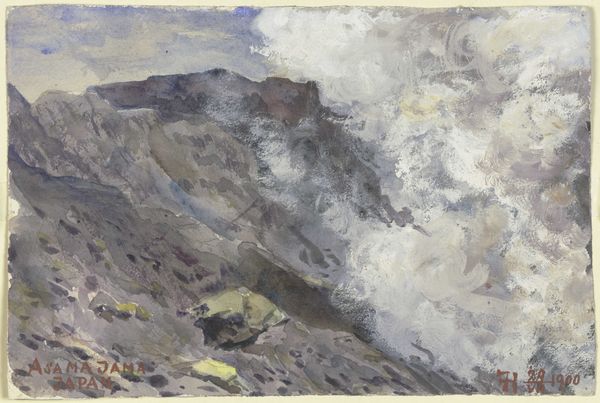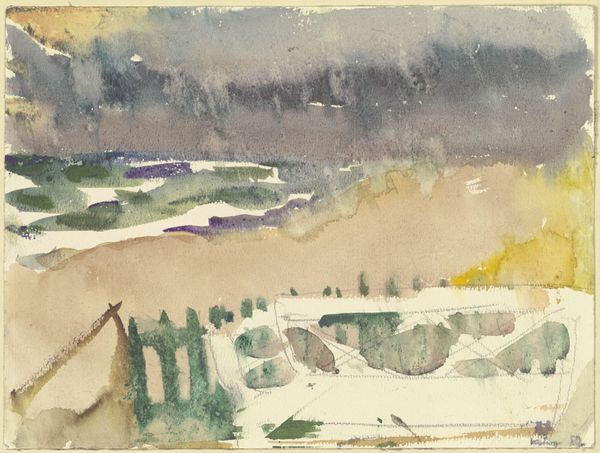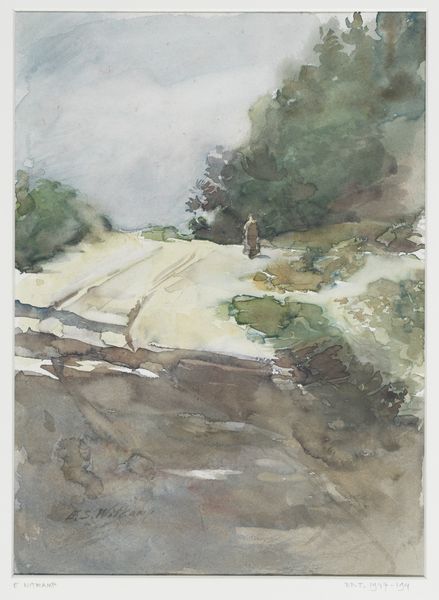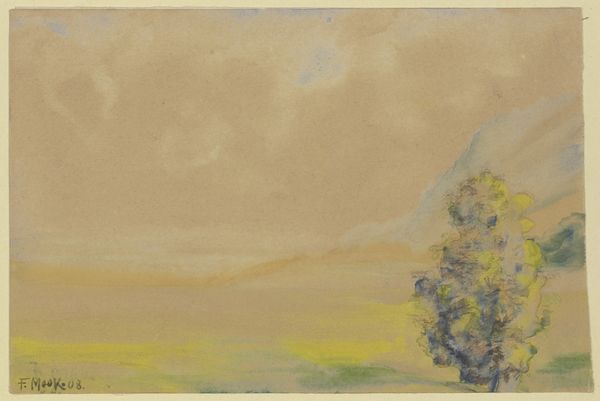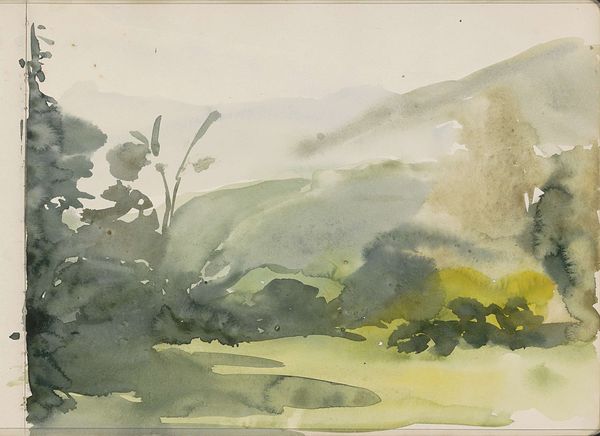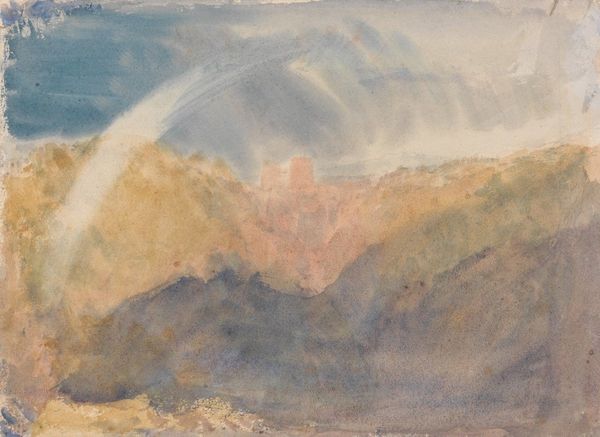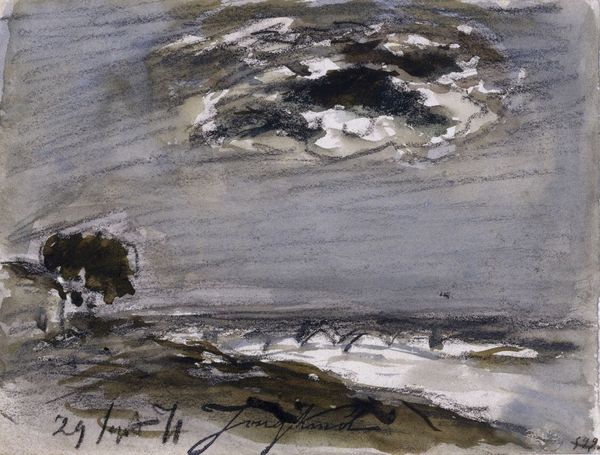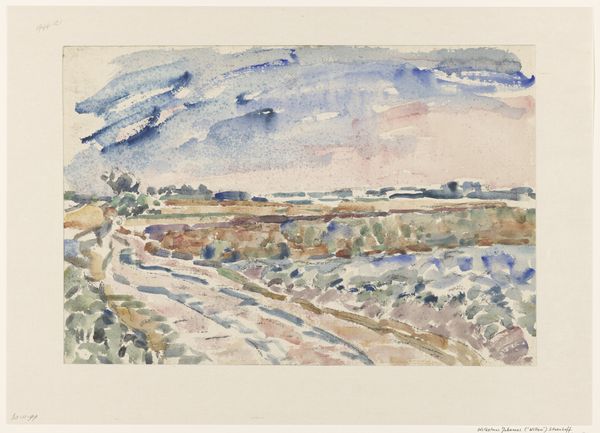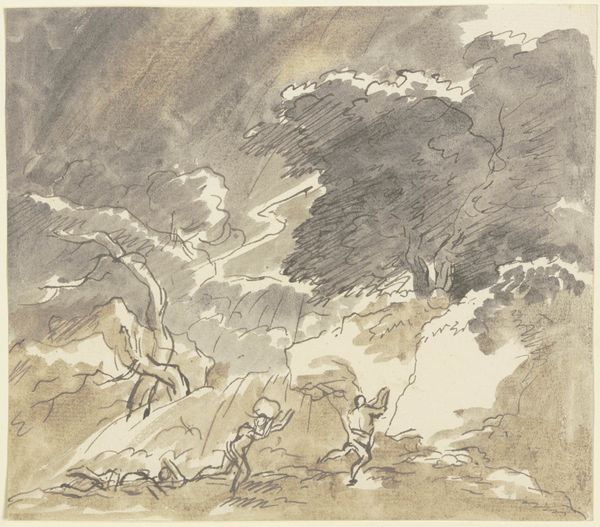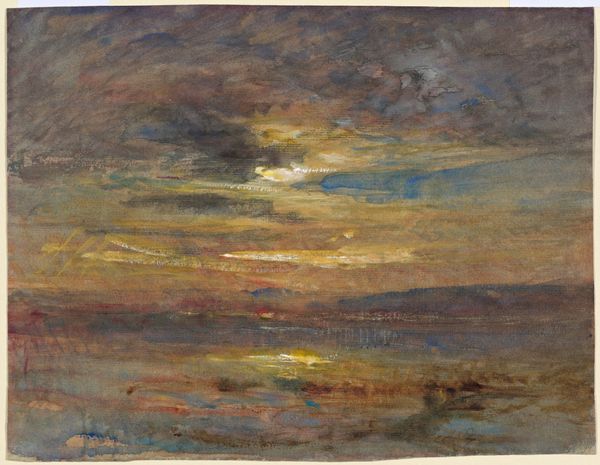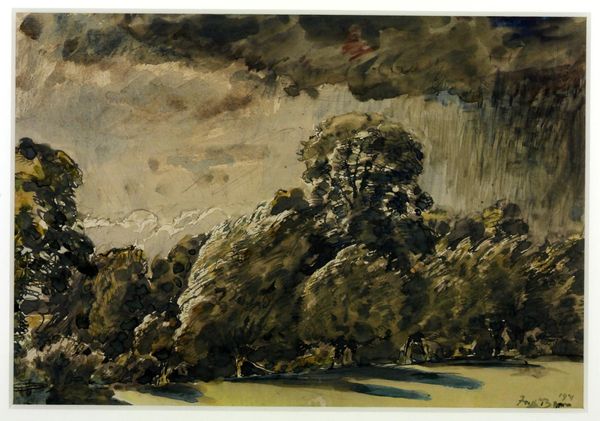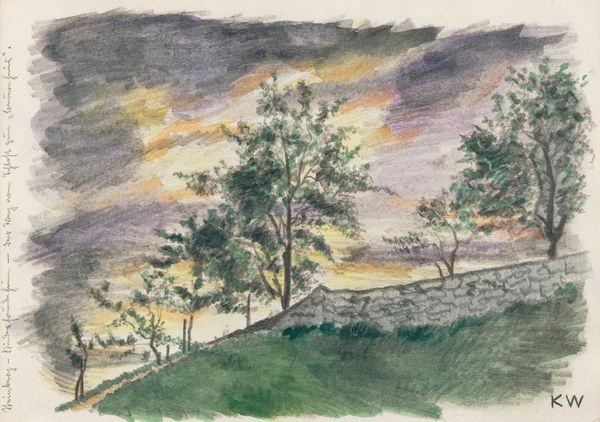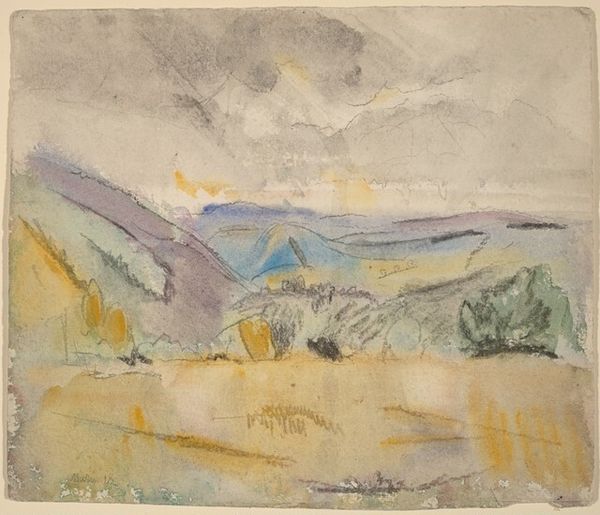
Copyright: Public Domain
Fritz Hauck made this watercolour of Papandajan Volcano in Java at the end of the 19th century. As an image of the natural world, it reflects European interests in understanding and representing other cultures and landscapes during the colonial era. Hauck was German and his travels in Indonesia and Java were a reflection of Germany’s interests in expanding its influence and trade in the region. The painting documents the geography of Java, but it also reveals a specific kind of European perspective toward it. We see the volcano as a sublime sight, something impressive, but also perhaps useful. Hauck’s painting is made in the tradition of landscape painting, but it is charged with the cultural and political context of its time. Understanding this image requires an appreciation of both art history and social history, considering the role of landscape painting as well as the history of European colonialism. Through research in archives and libraries, historians can investigate the relationship between art, culture, and power in the past.
Comments
No comments
Be the first to comment and join the conversation on the ultimate creative platform.
